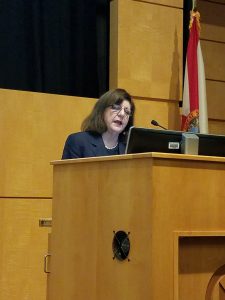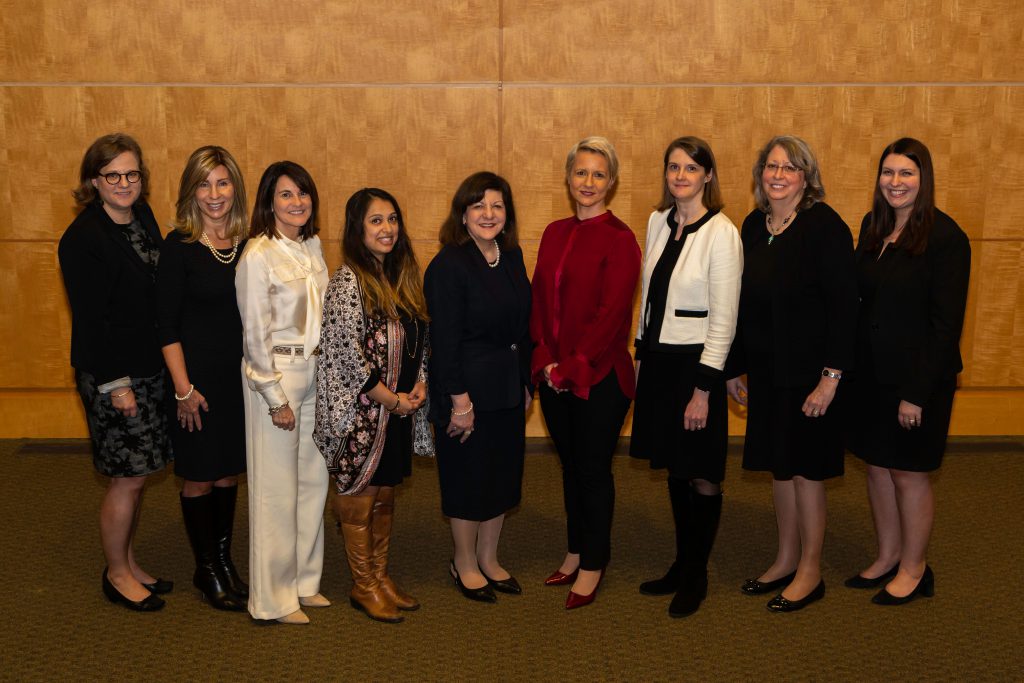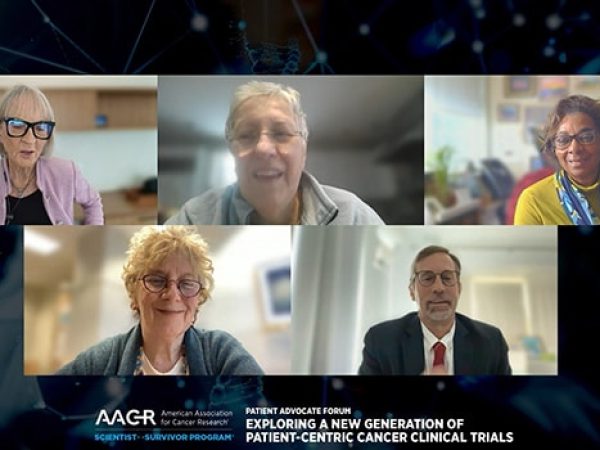Supporting the Vital Role of Women in Science
Today, February 11, marks the International Day of Women and Girls in Science, a United Nations initiative to encourage full and equal access to and participation in science for women and girls. Women have been responsible for countless scientific breakthroughs, yet they are underrepresented in the highest ranks of the scientific community. In many countries, women and girls do not have adequate access to scientific education, making it difficult to even contemplate careers in science.
The American Association for Cancer Research (AACR) is fortunate to have a core of dynamic female leadership. Elizabeth Jaffee, MD, has served as President since April 2018. When her term ends at Annual Meeting 2019, President-Elect Elaine R. Mardis, PhD, will take over the presidency. Jaffee and Mardis are the 13th and 14th women to hold this prestigious title.
What’s more, women now represent 40 percent of our membership ranks, 45 percent of the seats on the AACR’s Board of Directors, and are gaining representation among AACR journal editors and committee leadership positions.
Earlier this month, AACR Chief Executive Officer Margaret Foti, PhD, MD (hc), delivered a talk at Moffitt Cancer Center in Tampa, Florida, titled “The Vital Role of Women in Cancer Science: A Matter of Great Urgency for Patients.” The talk was part of Moffitt’s Women in Medicine Grand Rounds program, which features national and international leaders and innovators discussing the latest in cancer treatment and research.
Foti provided a fascinating perspective on the longstanding contributions of women in science, along with some recommendations on how scientific organizations can support women’s careers, ensuring a diverse workforce that embraces the contributions of all.
A diverse scientific workforce leads to innovation
Foti told the audience that the contributions of women have been pivotal to advances in cancer research, patient care, and public health. Studies have shown that heterogeneous research teams that include individuals of diverse backgrounds, nationality, and genders are more innovative, produce higher quality science, and result in better outcomes, she said.

In some ways, women appear poised for success in the scientific community. In 2018, for the first time ever, women made up the majority of both applicants and matriculants to medical school. Theoretically, this should set the stage for a robust pipeline of future physician-scientists.
But several factors conspire to drive women out of the scientific workforce, sometimes before they even get started. A study published in 2017 in the Journal of Oncology Practice indicated that 68 percent of practicing oncologists were male and 32 percent were female.
On the academic side, similar patterns exist. As of 2017, women earned 47 percent of medical degrees. But women represented 46 percent of assistant professors, 37 percent of associate professors, and just 25 percent of full professors at U.S. medical schools, according to the Association of American Medical Colleges.
Foti told the Moffitt audience that researchers have identified differences in the reasons men and women leave their careers in science and medicine. Women who leave cite family issues and problems with advisors, whereas men cite uncertain job markets and feeling that they chose the wrong subdiscipline. The lack of female representation in the upper ranks of academia may discourage women from applying for tenure-track jobs, and gender bias may adversely influence the awarding of grants and academic prizes.
Despite decades of important contributions, women may also be recognized less frequently than their male peers. In the past decade, women received only 27 percent of the prizes awarded in biology and biomedicine, despite representing almost 50 percent of the PhDs in the field. Gender differences are more extreme when examined by monetary value, with women receiving only 14.6 percent of the highest valued awards.
What can be done to support women in science?
Foti told the audience at Moffitt that institutions must recruit women in numbers that are consistent with the proportion of women in the field and must provide opportunities at every career level. Women should also be considered for any and all appropriate prizes and awards in their fields.
Foti suggested that mentoring relationships can be vital to early-career female scientists. Aside from providing career inspiration, a mentor can also provide valuable networking connections, and can help the mentee seek out opportunities within their organizations or elsewhere.
Another key role is that of a sponsor—a powerful person who actively seeks out ways for a young colleague to advance in the field. Foti pointed out that because there are fewer women in the senior ranks of scientists, there may be few obvious candidates for a young researcher seeking a sponsor.
The AACR’s Women in Cancer Research membership group is one example of how organizations can help connect women with valuable opportunities and help them make connections that can grow into mentoring or sponsoring relationships. Groups like this can make a difference in helping female scientists feel supported, Foti noted.
“Although women have come a long way in achieving leadership roles in the cancer workforce, their professional advancement and career opportunities have room to grow,” Foti said. “The future successes of women in cancer science and medicine will be ensured provided there is a real commitment to overcome the challenges and the realization that women in oncology can and will leave an indelible mark on the field.”




